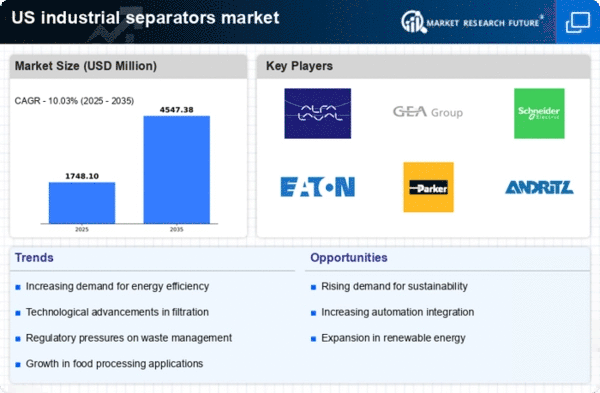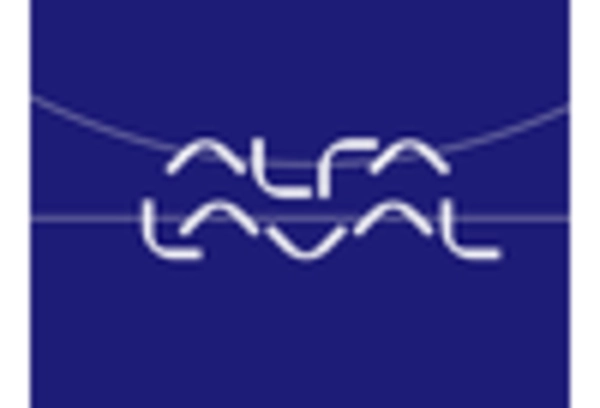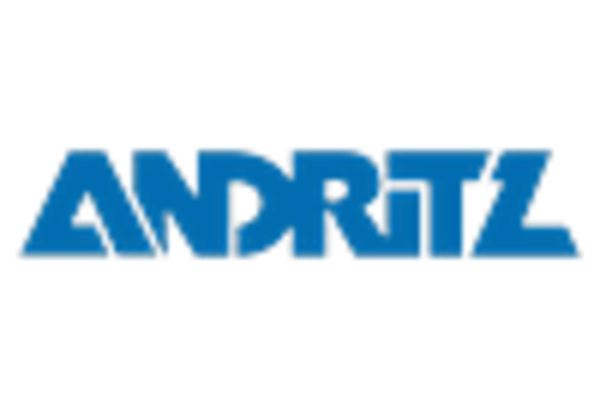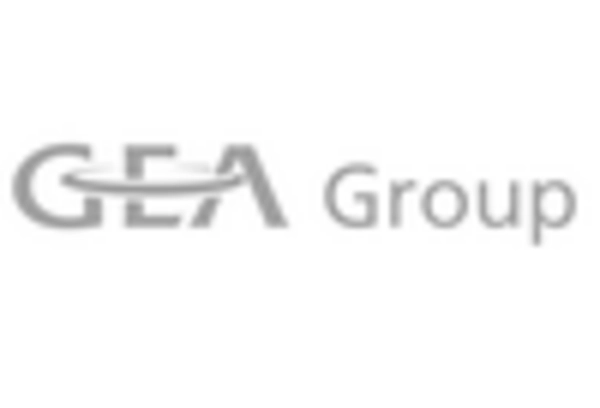Growth in the Food and Beverage Sector
The industrial separators market is witnessing substantial growth due to the expansion of the food and beverage sector. As consumer preferences shift towards healthier and more sustainable food options, manufacturers are increasingly investing in advanced separation technologies to ensure product quality and safety. The market for food processing equipment, including separators, is projected to reach $20 billion by 2027, reflecting a robust CAGR of 5.8%. This growth is driven by the need for efficient separation processes that enhance product purity and reduce contamination risks. Additionally, the rising demand for plant-based and organic products necessitates the use of specialized separators that can handle diverse materials. Consequently, the food and beverage industry's expansion is a key driver for the industrial separators market, prompting innovation and investment in new technologies.
Technological Integration and Automation
The industrial separators market is being transformed by the integration of advanced technologies and automation. The adoption of Industry 4.0 principles is leading to the development of smart separators that utilize IoT and AI for enhanced performance. These technologies enable real-time monitoring and optimization of separation processes, resulting in improved efficiency and reduced downtime. The market is projected to witness a growth rate of 8% annually as industries increasingly embrace automation to streamline operations. This shift towards technologically advanced separators is indicative of a broader trend within the industrial separators market, where companies are seeking to leverage digital solutions to enhance productivity and reduce operational costs. As automation becomes more prevalent, the demand for innovative separation technologies is likely to rise, further propelling market growth.
Regulatory Compliance and Safety Standards
The industrial separators market is significantly influenced by stringent regulatory compliance and safety standards. Industries are required to adhere to various environmental regulations, which necessitate the use of effective separation technologies to manage waste and emissions. For instance, the Environmental Protection Agency (EPA) has established guidelines that impact the design and operation of separators in sectors like wastewater treatment and chemical processing. Compliance with these regulations often leads to increased investments in advanced separation technologies, thereby driving market growth. The emphasis on safety standards also compels companies to adopt separators that minimize risks associated with hazardous materials. This focus on compliance not only enhances operational safety but also positions businesses favorably in the competitive landscape of the industrial separators market.
Increased Focus on Waste Management Solutions
The industrial separators market is increasingly shaped by the growing focus on waste management solutions. As industries face mounting pressure to reduce waste and improve recycling rates, the demand for effective separation technologies is on the rise. This trend is particularly evident in sectors such as mining, construction, and manufacturing, where efficient waste separation can lead to significant cost savings and environmental benefits. The market for waste management equipment, including separators, is expected to grow by 7% annually through 2030. Companies are investing in separators that can efficiently segregate recyclable materials from waste streams, thereby enhancing sustainability efforts. This heightened emphasis on waste management not only aligns with corporate social responsibility goals but also drives innovation within the industrial separators market.
Rising Demand for Efficient Separation Technologies
The industrial separators market is experiencing a notable increase in demand for efficient separation technologies. Industries such as oil and gas, food and beverage, and pharmaceuticals are seeking advanced solutions to enhance productivity and reduce operational costs. The market is projected to grow at a CAGR of approximately 6.5% from 2025 to 2030, driven by the need for improved separation processes. Companies are investing in innovative technologies that offer higher efficiency and lower energy consumption. This trend indicates a shift towards more sustainable practices within the industrial separators market, as businesses aim to minimize waste and optimize resource utilization. As a result, manufacturers are focusing on developing separators that not only meet regulatory standards but also provide significant cost savings over time.

















Leave a Comment